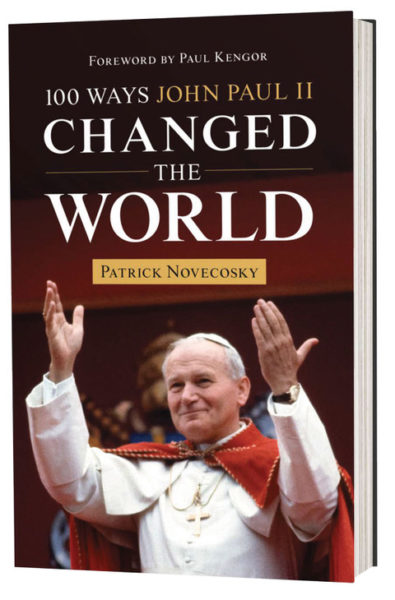It had been nearly 600 years since a successor of St. Peter resigned from his post. After months of reflection and prayer, Pope Benedict XVI became the third pope in the last 1,000 years to resign from the Chair of Peter.
The Feb. 11 announcement that shook the world has now given way to speculation as to who will become the 266th successor of St. Peter. The 115 cardinals who will choose the next pope (including 11 Americans and three Canadians) have already begun to assemble in Rome for meetings, prayer, and discernment. Their pre-conclave meetings have drawn the world’s attention.
The resignation
While the surprise announcement took everyone by surprise, Pope Benedict gave several hints at his decision that most Vatican watchers missed or dismissed.
On April 29, 2009, Pope Benedict stopped in Aquila, Italy, and visited the tomb of an obscure medieval pope named St. Celestine V (1215-1296). After a brief prayer, he left his pallium, the symbol of his episcopal authority as bishop of Rome, on Celestine’s tomb.
As Scott Hahn pointed out, Pope Celestine V was elected “somewhat against his will, shortly before his 80th birthday (Ratzinger was 78 when he was elected pope in 2005). Just five months later, after issuing a formal decree allowing popes to resign (or abdicate, like other rulers), Pope Celestine V exercised that right. And now Pope Benedict XVI has chosen to follow in the footsteps of this venerable model.”
Pope Benedict also indicated his inclination to step down in an interview with German papal biographer Peter Seewald. The writer told German magazine Focus that when he met with the Pope in December, he appeared to have lost vision in one eye, was losing his hearing, and looked emaciated.
“I had never seen him so exhausted, so worn out,” Seewald said. “He did not look unwell, but the fatigue that had taken over his whole being, his body and soul could not be missed.”
Seewald quoted Benedict as having said, “I’m an old man, and the strength is ebbing. I think what I’ve done is enough.” When Seewald asked if he was considering giving up the papacy, the Pope responded, “That depends on how much my physical strength will force me to that.”
The conclave
Pope Benedict acknowledged his impending retirement during his first public appearance after the announcement. “I did this in full freedom for the good of the Church, after having prayed at length and having examined my conscience before God, well aware of the seriousness of the act, but equally conscious of no longer being able to carry out the Petrine ministry with the strength that it requires,” he said during his Feb. 13 general audience.
The resignation became official on Feb. 28 when the Pope left the Vatican for his summer residence at Castel Gandolfo. He will live there until remodeling work is completed on the Mater Ecclesiae Monastery in the Vatican Gardens.
In his Feb. 14 address to thousands of priests from the diocese of Rome, in what turned out to be a farewell address in his capacity as their bishop, the Holy Father described his retirement plans.
“Even if I am withdrawing into prayer, I will always be close to all of you, and I am sure that you will be close to me, even if I remain hidden to the world,” he said in his mostly extemporaneous remarks.
According to current rules, established by Blessed John Paul II, a period of sede vacante (Latin for “empty seat”) follows a pope’s death or resignation. A conclave of papal electors (cardinals in good standing under the age of 80) must convene between 15-20 days after the Chair of Peter is vacated. Benedict altered those rules, allowing cardinals to shorten the length of the sede vacante. Earlier today, they voted to begin the conclave on Tuesday evening, March 12.
Presiding over the conclave will be the most senior cardinal-bishop under age 80, Cardinal Giovanni Battista Re. Two secret ballots are held each morning and two each afternoon in the Sistine Chapel. A two-thirds majority is required. Ballots are burned after each round.
Black smoke means no decision; white smoke signals that cardinals have chosen a pope and he has accepted. Bells also signal the election of a pope to help avoid possible confusion over the color of smoke coming from the chimney of the Sistine Chapel.
The presiding cardinal, if not elected himself, is charged with asking the elected candidate to accept the papacy. If the candidate accepts the election, the presiding cardinal will ask what the new pope’s name will be. The cardinals may elect any baptized Catholic male, but since 1389, they have always elected a fellow cardinal.
PATRICK NOVECOSKY is the editor of Legatus magazine. He will be in Rome for the conclave to elect the next pope. This article appears in the March issue of that publication.


[…] Edward Pentin, National Catholic Register Alert! Date of Conclave Set! – Fr. Z’s Blog Election of 266th Pope Begins March 12 – Patrick Novecosky, The Prætorium Profile of Future Pope Begins to Take Shape – David […]